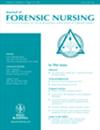Factors Impacting HIV Postexposure Prophylaxis Among Sexually Assaulted Patients Presenting to Two Urban Emergency Departments
IF 0.9
4区 医学
Q3 CRIMINOLOGY & PENOLOGY
引用次数: 0
Abstract
ABSTRACT Introduction Sexually assaulted patients who seek care in emergency departments are often recommended for nonoccupational HIV postexposure prophylaxis treatment. HIV postexposure prophylaxis is an effective method in preventing HIV transmission if the treatment is administered promptly and if a full 28-day course is completed. However, research has shown that only a fraction of patients who start the treatment will complete a 28-day course. Research is needed to explore factors that may be associated with compliance to postexposure prophylaxis so that interventions can be designed to address the factors that put patients at risk for noncompletion. Methods A retrospective chart review was conducted examining 246 medical records of sexually assaulted female patients who presented to one of two urban hospitals. A number of patient and event-related factors were examined to determine whether they were associated with HIV postexposure prophylaxis adherence among patients presenting at an emergency room after a sexual assault. Results Results revealed that five factors showed significant associations with sexually assaulted female patients completing HIV postexposure prophylaxis treatment. These factors include educational level, employment, health insurance, vaginal injuries, and tongue–mouth assaults. Implications for Practice The results of this study represent a starting point from which to inform the development of targeted interventions such that those most at risk for nonadherence can receive additional support or services to improve HIV postexposure prophylaxis adherence.两个城市急诊科性侵犯患者暴露后艾滋病预防的影响因素
摘要:在急诊室寻求治疗的性侵犯患者经常被建议进行非职业HIV暴露后预防治疗。如果及时给予治疗并完成完整的28天疗程,艾滋病毒暴露后预防是预防艾滋病毒传播的有效方法。然而,研究表明,只有一小部分开始治疗的患者能完成28天的疗程。需要进行研究,以探索可能与暴露后预防依从性相关的因素,以便设计干预措施,以解决使患者面临不完成风险的因素。方法采用回顾性图表法,对246例在城市医院就诊的性侵犯女性患者病历进行分析。对一些患者和事件相关因素进行了检查,以确定它们是否与性侵犯后在急诊室就诊的患者的艾滋病毒暴露后预防依从性有关。结果结果显示,5个因素与性侵犯女性患者完成HIV暴露后预防治疗有显著相关性。这些因素包括教育水平、就业、健康保险、阴道损伤和口舌攻击。这项研究的结果代表了一个起点,为有针对性的干预措施的发展提供了信息,使那些最有可能不坚持治疗的人可以获得额外的支持或服务,以提高艾滋病毒暴露后预防的依从性。
本文章由计算机程序翻译,如有差异,请以英文原文为准。
求助全文
约1分钟内获得全文
求助全文
来源期刊

Journal of Forensic Nursing
NURSING-
CiteScore
1.50
自引率
10.00%
发文量
120
期刊介绍:
The Journal of Forensic Nursing (JFN) the official journal of the International Association of Forensic Nurses, is a groundbreaking publication that addresses health care issues that transcend health and legal systems by articulating nursing’s response to violence. The journal features empirical studies, review and theoretical articles, methodological and concept papers, and case reports that address the provision of care to victims and perpetrators of violence, trauma, and abuse. Topics include interpersonal violence (sexual assault, abuse, intimate partner violence); death investigation; legal and ethical issues; forensic mental health nursing; correctional nursing; and emergency and trauma nursing.
 求助内容:
求助内容: 应助结果提醒方式:
应助结果提醒方式:


